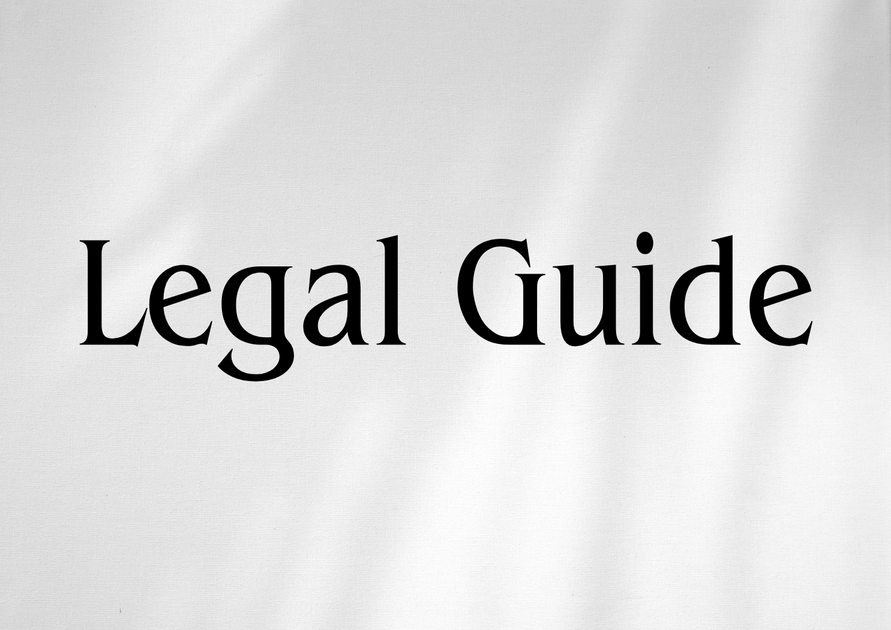Introduction
The Dubai International Financial Centre (DIFC) stands as a globally renowned financial hub, offering an advanced legal and regulatory framework designed for international finance. With the UAE government’s continuous drive toward regulatory modernization and economic diversification—exemplified by the introduction of new federal decrees and updated DIFC regulations in 2024 and anticipated into 2025—understanding the precise process for establishing an insurance company within the DIFC has never been more vital for investors, corporate executives, and legal practitioners.
This article provides an in-depth, consultancy-grade analysis of the legal and regulatory landscape governing the registration of insurance companies in the DIFC. Leveraging our professional experience, we delve into both statutory requirements and regulatory practices, referencing UAE Federal Law No. 6 of 2007 Concerning the Establishment of Insurance Companies and Agents (as amended), DIFC Law No. 14 of 2004 (the DIFC Laws), and the rules issued by the Dubai Financial Services Authority (DFSA). In light of UAE’s evolving legal landscape and recent enhancements to compliance obligations and cross-border operational standards, we offer not only a step-by-step procedural breakdown but also advanced risk management and compliance strategies for market entrants.
This guidance is essential for senior management, compliance officers, and legal teams seeking to establish a robust, compliant insurance entity in the DIFC. The analysis herein combines the latest legislative updates with professional advice, ensuring our clients and readers remain well-prepared for 2025 and beyond.
Table of Contents
- Legal Framework for Insurance Companies in DIFC
- Regulatory Authorities and High-Level Overview
- Eligibility Criteria and Preliminary Considerations
- Step-by-Step Registration Process
- Key Legal and Regulatory Requirements
- Compliance Obligations and Ongoing Responsibilities
- Comparative Analysis: Old versus New Regulatory Requirements
- Case Studies and Practical Scenarios
- Risks of Non-Compliance and Penalties
- Effective Compliance Strategies and Best Practices
- Conclusion and Forward-Looking Perspectives
Legal Framework for Insurance Companies in DIFC
Applicable Federal and DIFC Laws
The regulatory regime for insurance companies in the DIFC is shaped by a blend of UAE federal law (notably Federal Law No. 6 of 2007) and specific DIFC legal instruments, such as DIFC Law No. 14 of 2004 and subsequent Rules and Guidance issued by the DFSA. This dual layer ensures both international best practices and local compliance are enforced.
Key sources include:
- Federal Law No. 6 of 2007 (as amended) – Outlines the establishment, capital requirements, and operation of insurance companies within the UAE.
- DIFC Law No. 7 of 2004 (Law Relating to the Application of DIFC Laws) – Grants DIFC autonomy to administer its own regulations and courts.
- DFSA Rulebook – Incorporates key regulatory modules, notably the GEN, ISP, and PIN Rules, offering guidance on prudential standards, conduct of business, and fit-out procedures.
Recent and Expected Legal Updates for 2025
With ongoing government efforts to fortify the UAE’s position as a financial powerhouse, regulatory reforms continue apace. The UAE Cabinet Resolution No. (58) of 2020 regarding the Regulation of Insurance Activities within DIFC indicates a sharpened focus on transparency, anti-money laundering (AML), and cross-border supervision as we head toward 2025. Such changes are driven by both domestic policy objectives and international obligations (e.g., FATF recommendations).
These updates reflect a paradigm shift toward a risk-based approach, increased solvency requirements, and enhanced governance, classifying the DIFC as a jurisdiction aligned with the world’s leading insurance markets.
Regulatory Authorities and High-Level Overview
DIFC Authority (DIFCA) and Dubai Financial Services Authority (DFSA)
The DIFC Authority (DIFCA) acts as the central administrative body for licensing entities within the DIFC. Meanwhile, the Dubai Financial Services Authority (DFSA) serves as the primary regulatory agency overseeing financial activities, including insurance business, prudential supervision, and business conduct. The DFSA’s regulatory remit ensures that insurance companies meet the highest international standards for solvency, consumer protection, and AML compliance.
Coordination with UAE Insurance Authority (Now integrated with CBUAE)
Since 2020, the regulatory and supervisory responsibilities of the former UAE Insurance Authority have been consolidated under the Central Bank of the UAE (CBUAE), as per Federal Decree-Law No. (25) of 2020. However, for insurance businesses licensed exclusively within DIFC, the DFSA remains the competent authority, albeit with information sharing and oversight mechanisms with CBUAE for cross-border or onshore-linked business.
Eligibility Criteria and Preliminary Considerations
Corporate Structure and Minimum Capital
DIFC mandates that only companies incorporated as private companies limited by shares, protected cell companies, or branches of recognized foreign entities may apply for an insurance license. Entities must also ensure their Memorandum and Articles of Association are consistent with DIFC Companies Law and insurance-specific regulatory requirements.
Minimum Capital Requirements
The DFSA stipulates differentiated minimum capital based on the type of insurance business to be carried out. As of 2024, these are as follows:
| Type of Insurance Licence | Minimum Capital Requirement (USD) |
|---|---|
| Insurance – Retail/Commercial | US$10 million |
| Reinsurance | US$5 million |
| Insurance Intermediary/Manager | US$500,000 |
| Captive Insurance | US$150,000 |
Note: Recent amendments may occur; always verify with the DFSA’s latest published Rulebook.
Ownership and Control
At least one director must be physically resident in the DIFC, and ownership structures should be fully transparent, meeting both the DFSA’s fit-and-proper criteria and international AML/CFT obligations.
Step-by-Step Registration Process
1. Initial Consultation and Pre-Application Filings
Engaging a professional legal consultancy is advisable to organize a pre-application meeting with the DFSA. This step is essential for clarifying the business plan, structure, and suitability of key stakeholders. At this stage:
- Prepare a comprehensive business plan outlining types of insurance activities, intended clients, and risk appetite.
- Identify proposed directors, senior management, and beneficial owners, completing due diligence checks.
- Review preliminary documentation requirements per DFSA guidelines.
2. Legal Entity Incorporation in DIFC
Incorporate the intended company or branch via the DIFC Registrar of Companies. Required filings include:
- Certificate of Incorporation (or Certificate of Registration for Branches)
- Memorandum and Articles of Association compliant with DIFC Companies Law
- Proof of registered office address within the DIFC
3. Application Submission to DFSA
Your formal DFSA submission should contain:
- Detailed business plan and financial projections
- Corporate governance framework (including board and committee structure)
- Proof of minimum capital deposits
- Operational policies (not limited to AML, risk management, internal controls, complaint procedures)
- Documentation for all controllers, directors, and shareholders above the DFSA’s threshold percentage
The DFSA conducts an intensive review, often requesting clarifications or additional information. The applicant’s ability to demonstrate robust risk controls and compliance culture is critical for success.
4. Fit-and-Proper Assessments
The DFSA undertakes rigorous fit-and-proper assessments for the company’s directors, officers, and substantial shareholders, in line with the DFSA’s GEN, AUP, and AML Rules. This includes:
- Background checks (criminal, regulatory, and financial fitness)
- Verifying relevant experience and qualifications
- Ensuring management has adequate expertise in regulated insurance business
5. Licensing Decision and SRO Membership
Subject to successful review, the DFSA grants the insurance license and publishes the authorization on its public register. The company may also be required to join relevant self-regulatory organizations or professional associations.
6. Post-Licensing Set-Up and Commencement
- Set up statutory and regulatory reporting mechanisms
- Implement operational systems, including IT, compliance, and accounting structures
- Final confirmation to the DFSA prior to commencing regulated activities
Key Legal and Regulatory Requirements
Corporate Governance and Board Composition
The DFSA’s regulatory focus has shifted towards stronger governance, mandating:
- Distinct separation between executive management and board oversight
- At least one independent non-executive director for enhanced oversight
- Defined roles for risk, audit and remuneration committees
Fit-and-Proper Standards
Eligibility criteria under DFSA’s GEN Module require controllers, directors, and key functionaries to:
- Maintain high standards of integrity and competence
- Avoid conflicts of interest and demonstrate sound judgment
- Possess industry experience commensurate with the complexity of insurance business undertaken
Financial and Solvency Requirements
Minimum capital is augmented by ongoing prudential reporting and solvency standards to ensure that the company remains financially viable at all times. Updated PINS (Prudential – Insurance Business) Rules in 2024 emphasize:
- Risk-based capital adequacy calculations
- Asset-liability management frameworks
- Early warning systems for breaches in capital adequacy ratios
Anti-Money Laundering (AML) and Counter-Financing of Terrorism (CFT)
Based on Federal Decree-Law No. (20) of 2018 and the DFSA’s AML Module, insurance companies must:
- Implement effective customer due diligence (CDD) systems
- File suspicious activity reports (SARs) promptly with the UAE Financial Intelligence Unit (FIU)
- Educate staff and implement ongoing training programs
Conduct of Business and Client Protection
Client protection, disclosure rules, and fair treatment under the DFSA’s Conduct of Business (COB) Rules highlight the importance of market integrity and consumer trust. Obligations include:
- Clear communication of product terms
- Timely settlement of claims
- Fair handling of disputes and complaints
Compliance Obligations and Ongoing Responsibilities
Companies must establish an internal compliance framework that covers:
- Periodic filing of audited accounts and regulatory returns
- Maintenance of accurate policyholder records
- Implementing robust IT and cybersecurity measures
- Appointment of a dedicated compliance officer and MLRO (Money Laundering Reporting Officer)
- Engagement with regular DFSA and DIFC Authority audits
Compliance Checklist
| Obligation | Frequency |
|---|---|
| Prudential Reports | Quarterly/Annually |
| AML/Compliance Audits | Annually |
| Staff AML Training | Bi-annually |
| Board Meetings (min.) | Quarterly |
| DFSA Correspondence Updates | As required |
Comparative Analysis: Old versus New Regulatory Requirements
| Aspect | Prior to 2024 | 2024-2025 Updates |
|---|---|---|
| Capital Requirement | Flat minimums for all categories | Risk-based and tailored capital rules |
| Governance Framework | General requirements | Mandatory independent directors and additional committees |
| Reporting Standards | Manual/offline invoicing | Online platforms, stricter deadlines |
| AML Policies | Basic KYC requirements | Comprehensive CDD, SAR filing, staff training |
| DFSA Review | Documentary | On-site inspections and operational reviews |
Case Studies and Practical Scenarios
Case Study 1: International Reinsurer Entering DIFC
A European reinsurer sought DIFC access in early 2024. The company’s main challenges included meeting enhanced solvency requirements and appointing an independent non-executive director. By engaging a UAE legal consultancy, they restructured governance, updated compliance policies, and satisfied DFSA’s rigorous licensing criteria within four months—demonstrating the importance of local regulatory insight.
Case Study 2: Non-Compliance and Sanctions
An insurance intermediary failed to file its annual compliance reports on time, citing internal IT system issues. The DFSA imposed a significant fine and temporary suspension of new business—a stark reminder that operational readiness and robust compliance are non-negotiable.
Example: Start-Up Insurer and AML Breaches
A hypothetical startup insurer without proper AML protocols faces regulatory action under Federal Decree-Law No. (20) of 2018, including potential license revocation and reporting to the Central Bank, underlining that AML/CFT diligence is central to long-term business viability.
Suggested Placement for Visuals:
- Process Flow Diagram: ‘Insurance Company Registration in DIFC – Process Overview’
- Checklist Table: ‘DFSA Compliance Obligations’
- Penalty Matrix: ‘DFSA Fines for Non-Compliance – 2024-2025’
Risks of Non-Compliance and Penalties
DFSA Enforcement Actions
Failure to comply with DFSA and DIFC requirements may result in:
- Administrative fines: Up to US$1 million for material failures
- License suspension or revocation
- Public reprimand, naming, and shaming
- Civil or criminal proceedings under UAE federal law for AML/CFT or fraud offences
- Obligation to make restitution to affected policyholders
Penalty Comparison Table
| Non-Compliance Area | Potential DFSA Penalty |
|---|---|
| Late Regulatory Filings | Up to US$25,000 per instance |
| AML Breaches | Up to US$1 million or license revocation |
| Misleading Marketing | Up to US$100,000 and/or business restrictions |
| Unfit Senior Manager | Disqualification + public censure |
Effective Compliance Strategies and Best Practices
- Engage specialist legal consultants early to design end-to-end compliance frameworks tailored to the business plan and risk profile.
- Implement a ‘Three Lines of Defence’ model (operational management, risk management/compliance, internal audit).
- Invest in regulatory technology (RegTech) for reporting, monitoring, and AML compliance.
- Continuous staff training and culture of compliance, including regular legal updates and scenario analysis.
- Maintain a direct line of communication with the DFSA to stay informed of evolving regulatory expectations and best practices.
- Utilize professional directors or independent advisors to support robust governance and risk management.
Adopting these strategies not only satisfies legal requirements but also positions the organization as a credible and resilient player in the DIFC insurance market.
Conclusion and Forward-Looking Perspectives
Registering an insurance company in the DIFC requires navigating a sophisticated web of laws, regulatory pronouncements, and practical requirements. With the UAE’s legal environment rapidly evolving through new federal decrees and DFSA rulemaking, proactive compliance, and purposeful risk governance have become non-negotiable for both new entrants and established market participants. As legal consultants, we recommend prioritizing end-to-end regulatory planning, continuous engagement with regulators, and agile adaptation to future legal reforms expected in 2025 and beyond.
Clients and business leaders looking to leverage DIFC’s premium platform must view compliance and legal risk management as integral to their long-term success. By staying informed, seeking specialist advice, and implementing robust controls, organizations can benefit from DIFC’s world-class environment and contribute to the UAE’s vision for robust, globally integrated financial and insurance services.




